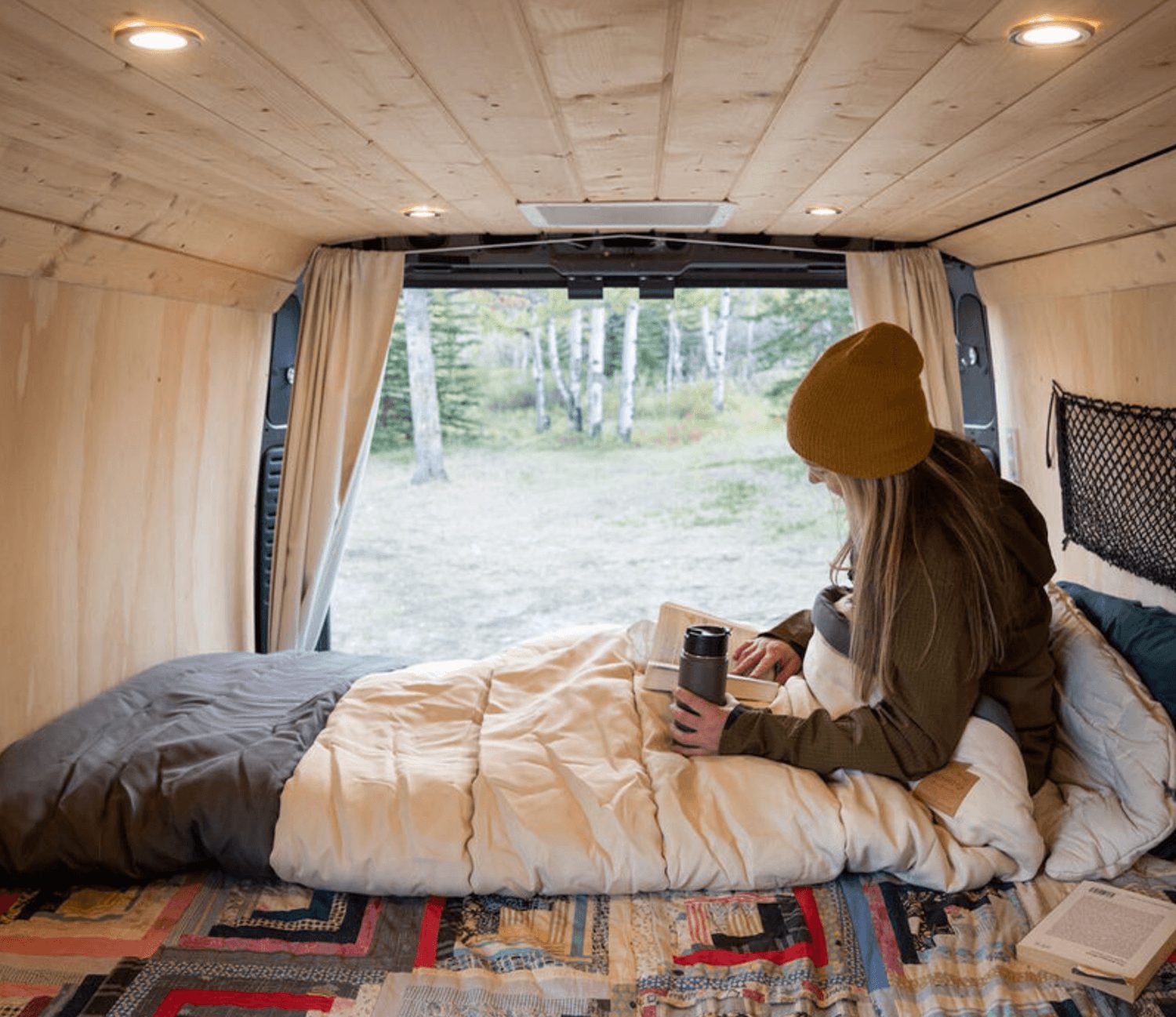How To Choose a Sleeping Bag I Camping World Blog
Your sleeping bag choice matters when you go camping. A comfortable bag for summer can leave you shivering when temperatures drop in the fall, but a winter sleeping bag can make you sweat during the warmer months.
Some RVers stock sleeping bags for hosting guests inside their RV, while others use them to make tent camping comfortable for guests or their kids. Even if you’re a car camper or renting an RV, you should know how to choose a sleeping bag for any season.
So, here are some tips for choosing the best one for your needs!
Sleeping Bag Temperature Ratings
Photo by Camping World
You need to understand temperature ratings to choose the right bag. But temperature ratings can be tricky because they aren’t 100% accurate. It’s just not possible due to variances such as your sleeping pad choice, overnight clothing, weather variables like moisture and wind, and even your metabolism.
However, there is a standard by which they are tested: ISO 23537-1:2022. The ISO (International Standards Organization) establishes a comfort rating and a lower limit rating for every bag they test.
Comfort rating is the temperature a cold sleeper would feel comfortable.
Lower limit rating is the temperature at which a warm sleeper would feel comfortable.
Summer Sleeping Bags
Summer sleeping bags typically have a rating of 30℉ or more. They are made for warm summer nights when cold temperatures are not a concern. They will keep you cozy without getting too hot. If you get too warm, simply unzip the bag to let some cool air in.
Stay cool during the summer in the Klymit KSB 35 Sleeping Bag.
Winter Sleeping Bags
Winter sleeping bags are typically rated for 15℉ or less. These are made for cold nights where warmth is a must. You’ll naturally want these zipped up so you don’t release the heat.
Keep warm in the winter with the Klymit Wild Aspen 0°F Sleeping Bag.
Three-Season Sleeping Bags
A three-season sleeping bag is typically rated for between 15℉ and 30℉. These are great for warmer summer months and cooler spring and fall months. You can partially unzip them when you get warm or close them when you get cold.
What’s the Best Temperature Rating for a Year-round Sleeping Bag?
Generally, a warm sleeping bag rated for temperatures down to 20℉ will provide comfort throughout the year. You can unzip it further when warm and poke a leg out to cool down. In cold weather, you can use a sleeping bag liner or wear extra layers to stay warm. But if you plan on winter camping, you’ll likely need something with a lower temperature rating.
Please note that the numbers on your bag don’t always match the ISO rating. For example, an advertised 30℉ sleeping bag could have an actual ISO rating of 28℉ or 32℉. Most manufacturers round up or down to a number ending in zero or five.
Types of Sleeping Bags
Photo by Camping World
There are two distinct types of sleeping bags: those for RV or car camping and those for backpacking.
RV Sleeping Bags
RV sleeping bags are larger and roomier than backpacking sleeping bags. They are also more cost-effective. There is, however, a downside, and that’s that they don’t store as well since they are bulkier. If you need something for your RV or to make tent camping more comfortable, choose an RV sleeping bag.
Backpacking Sleeping Bags
Sleeping bags for backpacking are light and compact, making them easy to carry and return to a compact stuff sack when storing. Their downside is that they can be very snug when you climb inside.
Sleeping Bag Shapes
Photo by Camping World
You’ll also find sleeping bags in four main shapes: rectangular, semi-rectangular, mummy, and double bags. Here’s a quick breakdown of these shapes:
Rectangular bags offer the most room inside, allowing you to sleep in multiple positions and stretch out if needed. Many can also be fully unzipped and used as a blanket or comforter.
Semi-rectangular bags are also sometimes labeled ‘barrel’ or ‘modified mummy’ bags. They offer a nice balance between comfort and warmth.
Mummy bags are the most snug fit and don’t allow much movement inside the bag. If you roll over, the bag rolls with you, but the advantages of a snug fit are added warmth and reduced bag weight.
Double sleeping bags offer enough space for two people, making them ideal for couples camping together or snuggling with a pup.
Sleeping Bag Insulation
Photo by Camping World
The two main types of sleeping bag insulation are down and synthetic. There are advantages to both types.
Down Sleeping Bags
The advantages of down insulation are as follows:
Lightweight and durable
Compresses for compact packing
Performs well in cold, dry weather
Retains loft and warmth longer
Although down insulation gets a bad reputation for underperforming when wet, many manufacturers finish their down sleeping bags with some type of water-repellent treatment to add protection and water resistance when you’re camping in wet conditions.
If you need something that provides added warmth and durability for extending your camping season into the early spring or late fall (shoulder seasons), a down sleeping bag is a better choice.
Synthetic Sleeping Bags
The advantages of synthetic insulation are as follows:
Affordable
Insulates better when wet
Non-allergenic
Dries quickly
If you’re primarily using your sleeping bag inside your RV or in a tent for summer camping, you’ll save a little money by choosing a bag with synthetic fill.
What is the Best Insulation For Sleeping Bags?
The truth is that there are pros and cons to synthetic and down insulation. Keeping a down bag dry is not as difficult as some might suggest, which somewhat discredits the argument that synthetic insulation is better when wet.
However, there are environmental considerations that sway some towards synthetic bags too. If you choose a down design, look for a company that sources them ethically. Bags from responsible manufacturers will usually be labeled as RDS (Responsible Down Standard) or TDS (Global Traceable Down Standard).
How Do I Find a Sleeping Pad That Works With My Sleeping Bag?
Photo by Camping World
A sleeping pad provides an important insulation layer between you, your sleeping bag, and the ground. Your body actually loses more heat to the ground than it does to the air (conduction versus convection, for all you science folks!).
This is especially true if you’re sleeping in a tent, and a quality sleeping pad is the best way to minimize heat loss to the ground. R-value is a measure of the warmth of a sleeping pad. A sleeping pad with an R-value of 3 is generally solid for most of the year, but you also want a pad that you won’t slide off every time you move throughout the night.
Learn why you should pack a sleeping pad for RV camping.
Along with your sleeping bag choice, learning how to choose the right camping tent will help you enjoy restful nights in the outdoors. Or, if you’ll be sleeping inside your RV, you might enjoy these RV bedroom accessories for better sleep!
Do you have any questions about choosing sleeping bags for any season? Let us know in the comments below!
The post How To Choose a Sleeping Bag I Camping World Blog appeared first on Havens travel and tour blog .




